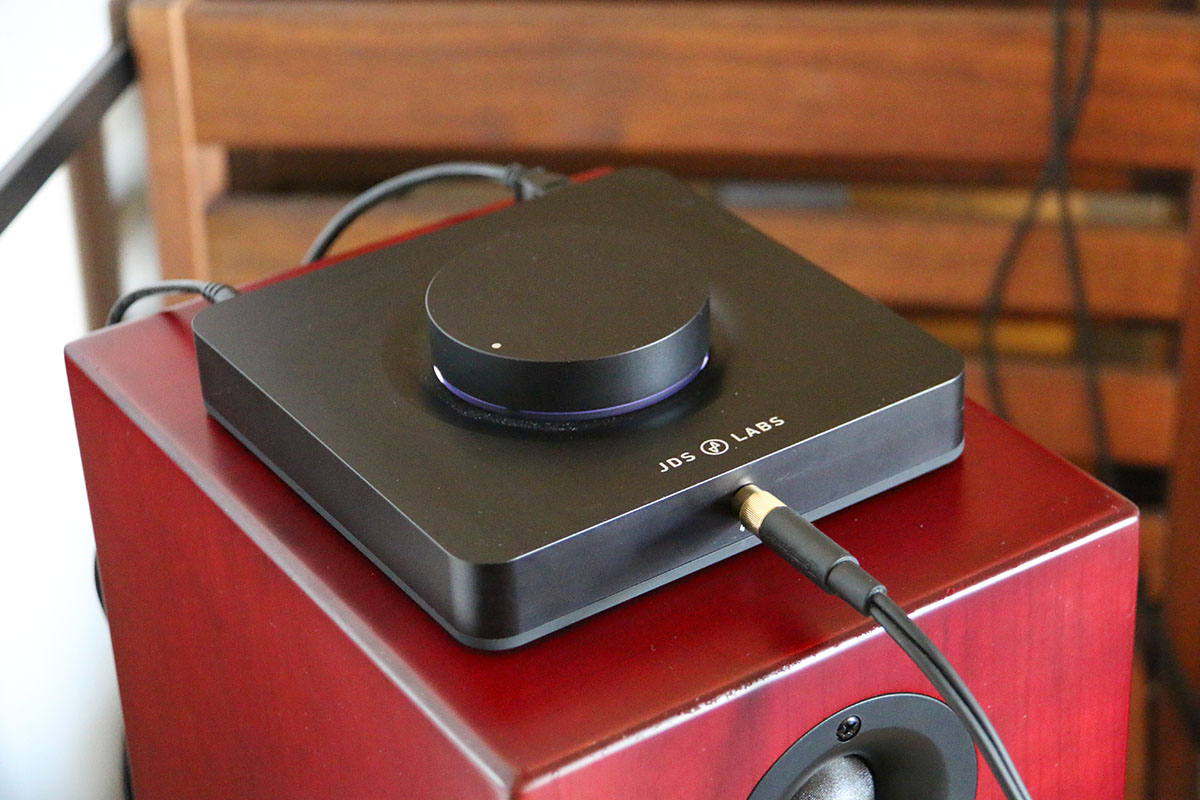
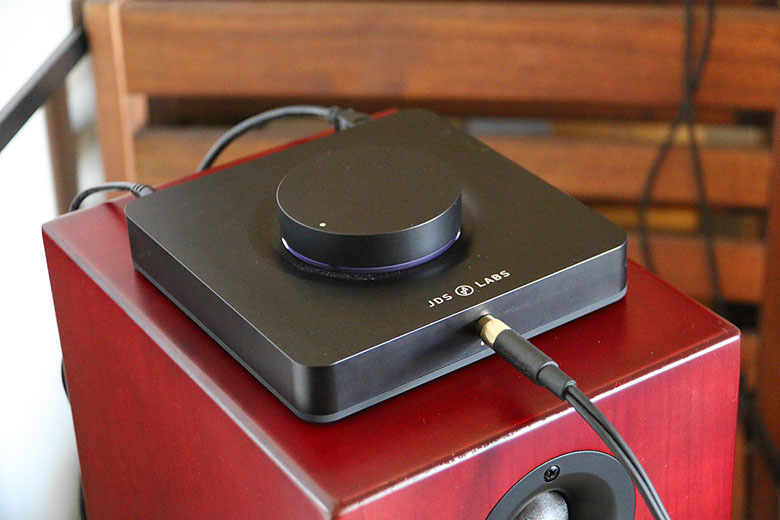
The Master Switch


The Master Switch
One of the biggest debates in the audio world is whether an amplifier should change the quality of the music, or simply present it as objectively as possible. After all, the argument goes, if a musician or a band wanted the music they make to sound differently to the final version that comes out of a recording studio, they would have made it that way. And while we think there is merit to both sides of the argument, it’s pretty clear which side JDS Labs comes down on. In this review, we break down The Element’s sound, design, packaging and accessories, specs and more. To see how it stacks up, see our list of the best headphone amps.
One of the things JDS Labs swear by – and we can confirm that The Element nails this – is what is referred to in the industry as pitch-black sound. The idea is that, in a perfect amp, the internal circuitry should give off absolutely no noise at all, even at full power. When you turn the volume to full with nothing playing, a lesser amp will deliver a very slight hiss. That’s not a big thing – and in many tube amps, we’d be disappointed not to hear it, as that hiss is essential to altering the character of the sound. But if you’re going for true objective audio quality, without any kind of colouration, then zero noise is your goal. The Element makes no noise. At all. Even at maximum volume, the background is as black as Donald Trump’s shrivelled little heart. And we mean that in the nicest possible way.
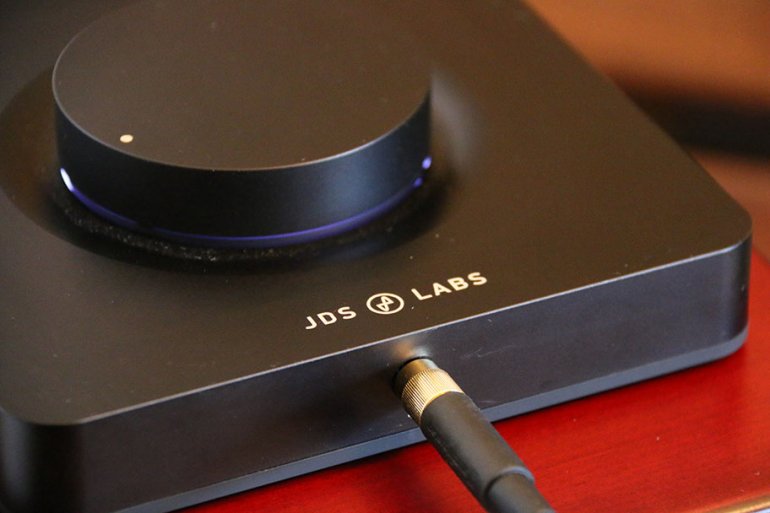
The science and testing driving the internals of The Element is pretty impressive. It’s not something the company goes out of its way to advertise, but it’s there if you want it – and if you know what you’re doing, it makes for some fascinating reading. Put some music on, and it’s clear that while perfect objectivity hasn’t been completely achieved, it’s very close. The amp certainly presents material as naturally as possible, with the dynamic realism that we really enjoyed hearing, but it also feels like it gives it a bit of extra life and character. There are other clever features, too, like circuits which eliminate the slight ‘thump’ noise you get when turning an amplifier on and off. And again, all of this works extremely well, with sound matching design, all backed up by some very solid science.
It’s a solid-state amp, so that realism and pitch-black background aren’t surprising; you can read more about solid-state amps here. If you prefer tube sound, or like your recordings to have a little bit more character and liveliness to them, this isn’t going to be for you. It offers fantastic sound, but we can totally see why some might prefer more bouncy amps.
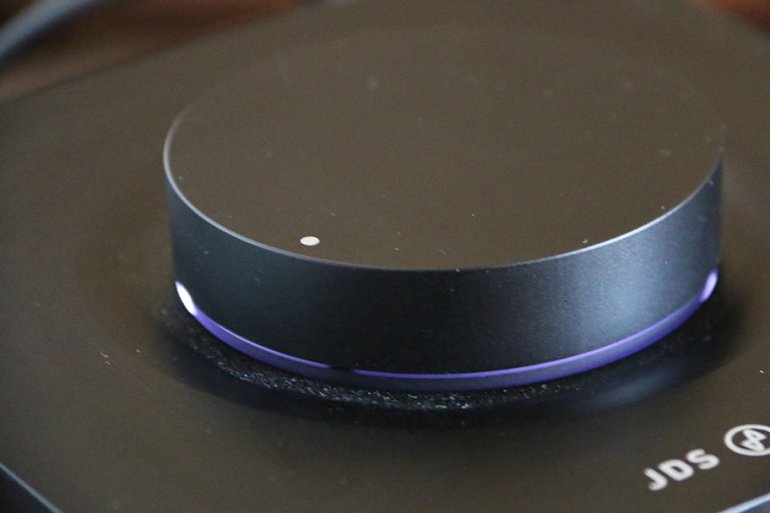
The quality of the audio felt big and booming. It was rich – not necessarily in terms of coloration, but in terms of detail. Bass felt deeper. Vocals smoother. Violins and hi-hats crisper. Guitars bit hard, and kick drums snapped and thumped agreeably. It’s not quite as neutral and clear as something like the company’s Objective2 (full review here), which delivers the most natural sound we’ve ever heard. But while it might not be the ultimate objective solution, it makes up for it by lifting the audio up on a pedestal, and presenting it in the best possible light. The audio performance of this amp felt confident and assured – a lot like its design.
We also adored the soundstage; while not quite as wide as other, pricier amplifiers, we could definitely pick out instruments at different positions around us, and we got a real sense of space and air. It’s a testament to the engineering that’s gone into this thing that this aspect of the sound never faltered, no matter what kind of music we were playing, or how dense it was. It was actually quite astonishing how quickly this became our go-to amp for daily use – the one we used whenever we simply wanted to listen to music while we worked. The sound fit effortlessly into our set up, and no matter what headphones we happened to be testing, it provided a superb benchmark. For the record, the headphones we thought best complimented The Element were a pair of Focal Utopias (full review here), although at nearly $4,000, we recognize that might be overkill for most people!
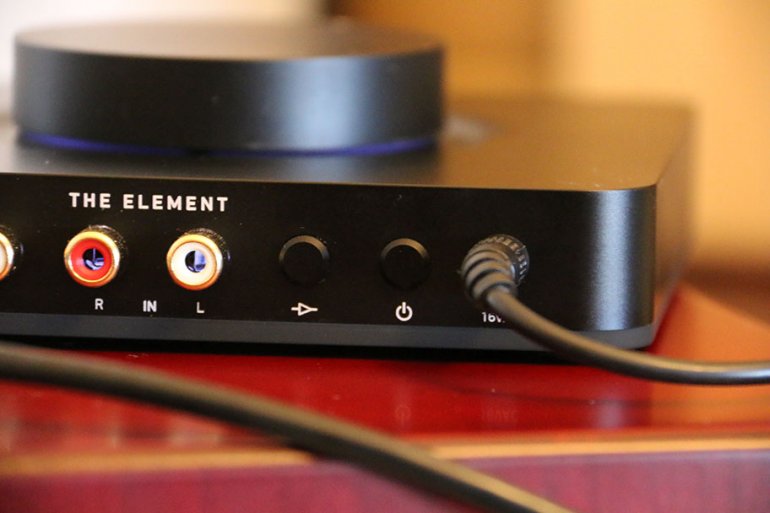
We’re not going to bombard you with the science here, but it’s worth highlighting a couple of things that allow the amp to pull off such an exceptional performance. The first is the very, very low output impedance of 0.1 ohms. Impedance refers to electrical resistance, and as a general rule, any headphones you listen to with an amp should have an impedance of at least eight times the amp’s output impedance. So if the amp has an output impedance of 2 ohms, it would be advisable not to use any headphones with an impedance of less than 16 ohms. Obviously, the lower the output impedance, the better, as it means you can listen to a wider and more varied range of headphones on the amplifier. A low output impedance also means fewer artefacts in the sound, and in addition to this, The Element puts out a lot of power - 1.5 watts of it, enough to handle just about any headphone around. This particular aspect is helped along by the gain switch, which allowed us to run even sensitive in-ears without any issue - it drove our pair of Audiofly AF140s without a hitch.
We don’t feel that the amp performs quite as well when used in standalone DAC mode. Nothing it did convinced us that it would be a better solution than, say, the Optoma NuForce uDAC5 (full review) - a super-simple DAC that is easy to slot into a signal chain - or even JDS’ own OL DAC. And if you buy this just so you can use it as a DAC, you’re crazy.
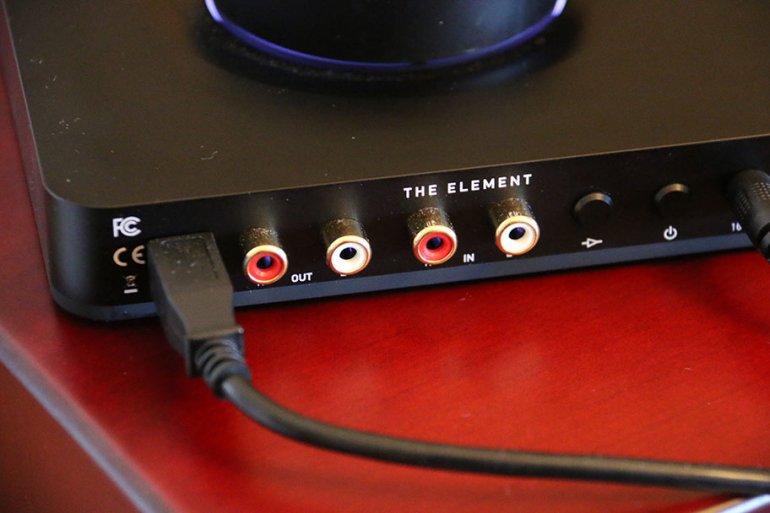
The Element is just gorgeous. As desktop amps go, it beats just about everything that doesn’t involve glowing tubes and steampunk knobs. And unlike so many of its competitors, it is wonderfully uncomplicated, with minimal controls and the kind of layout that a moderately smart toddler could operate. The Element is a slim black box, roughly as long and wide as two hands laid flat next to each other. The slim profile is dominated by a giant volume knob – one which has a smooth travel, and a surface that feels non-slip and grippable. A slim band of light runs along the bottom edge of the knob when the amp is turned on – you can select from multiple colors when you order, including black, copper and red. It’s a nifty way of indicating power, and coupled with the monochrome housing and smooth finish, it makes this amplifier as sleek and seductive as a little black dress. On that note, If there’s one criticism, it’s that the black finish does tend to pick up dust a little bit. It’s a minor point, though, and a quick wipe down with a tissue will get rid of most of it.
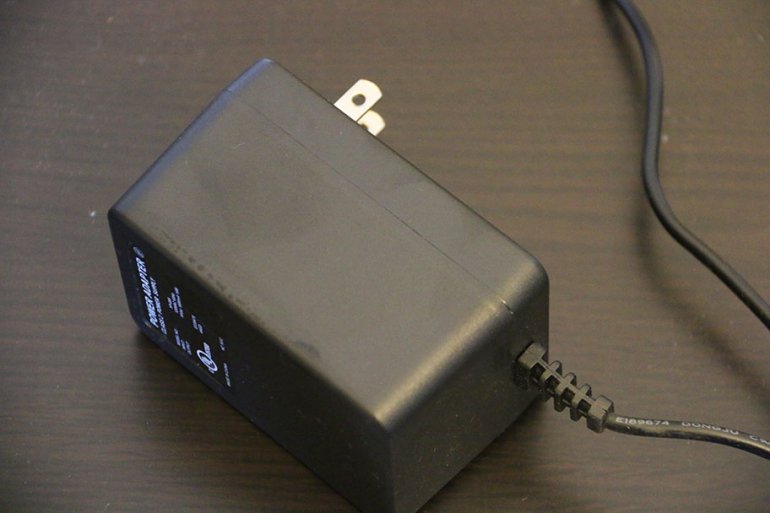
There’s a standard 6.3 mm headphone jack round the front. All the other controls are at the back, including a power switch, a gain switch, a USB jack and twin analogue jacks for both a DAC input and DAC output. Everything is well laid out, available at a glance. Using it as a stand-alone DAC is as simple as turning the headphone amp off.
We loved the design of The Element. It’s everything we want in a simple desktop and: slim, sexy, easy-to-use, unobtrusive, versatile. It stands in stark contrast to some of the company’s other products, but it’s clearly the bigger brother of the EL Amp and EL DAC. This amp has a design we can see hanging around for a very long time – like the iPhone, the basic DNA is so solid that we can’t imagine what comes next will deliver huge changes. And for once, we’re totally cool with that.
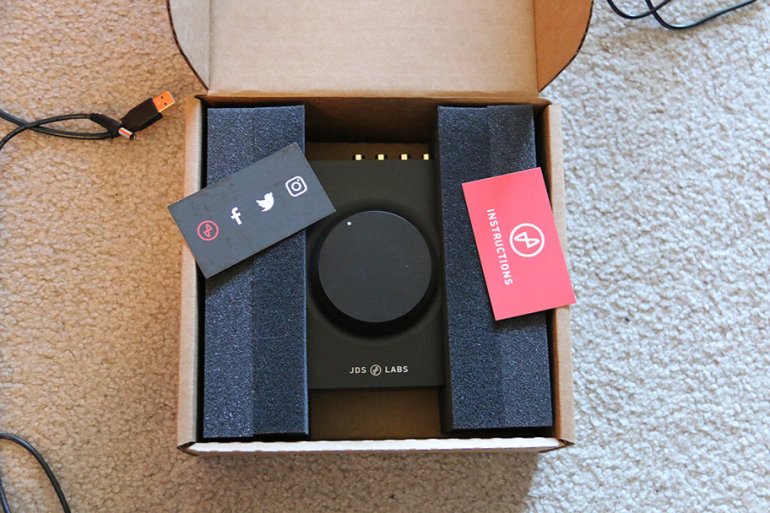
Everything here is pretty straightforward. The amp comes in a simple cardboard box, with the JDS logo prominently displayed. You don’t get much in terms of accessories: a power adapter, and a simple three-foot USB cable. Nothing we didn’t expect to see, and nothing that doesn’t work exactly as advertised.On a vaguely related topic: isn’t it time we started seeing some more cool accessories getting shipped out with amps? How about more nifty carry cases? How about… Um…Fine. We can’t think of many accessories you’d actually need with a headphone amp. Although JDS did send us a very nifty 3.5mm-to-6.3mm jack, emblazoned with their logo. You can actually get one of those from their website.
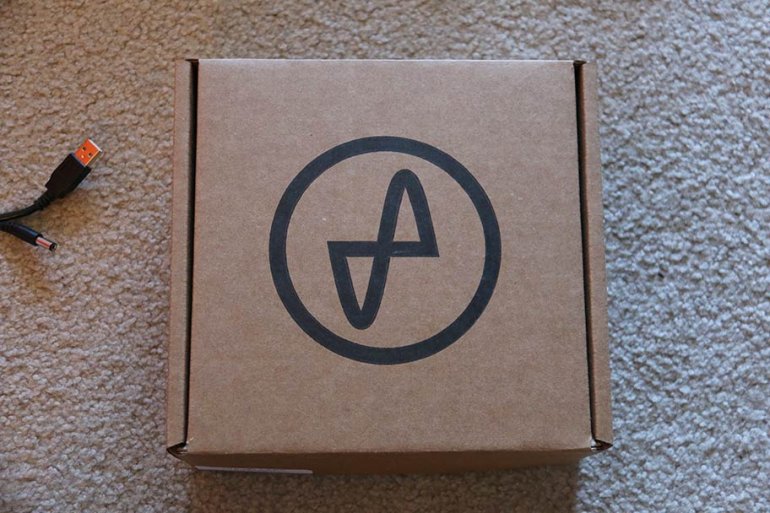
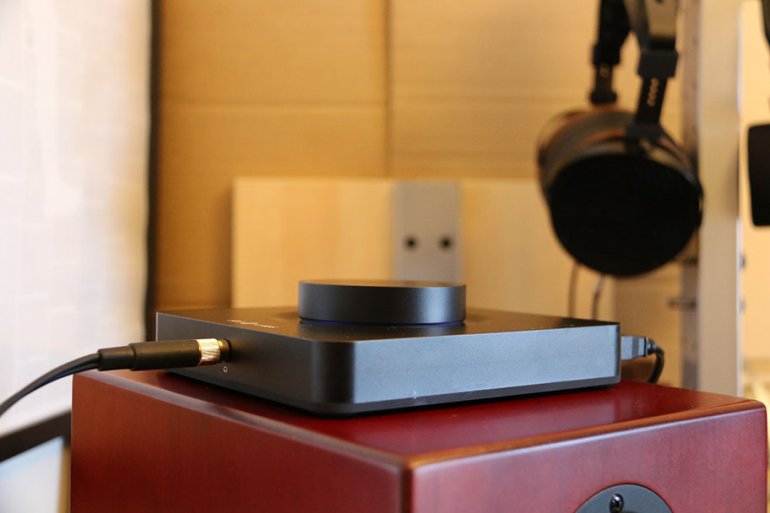
| Amp | Price | Weight | Dimensions | RHI* | WPC** | DAC*** |
|---|---|---|---|---|---|---|
| JDS Labs The Element | $349 | 1.13lbs | 5.8" x 5.8" x 1.6" | Over 1.6Ω | 1.5/32Ω | Yes |
| Schiit Jotunheim | $399 | 6lbs | 9” x 6” x 2” | Over 1.6Ω | 1.5/32Ω | Yes |
| Cambridge Audio DACMagic Plus | $599 | 2.6lbs | 8.6" x 7.6" x 2" | 32-600Ω | Unknown | Yes |
| AudioQuest Dragonfly Red | $199 | 2oz | 2.4” x 0.75” x 0.5” | Unknown | Unknown | Yes |
| JDS Labs EL Amp | $279 | 1.15lbs | 5.8" x 5.8" x 1.6" | Over 0.1Ω | 1.5/32Ω | No |
*RHI = Recommended Headphone Impedance
**WPC = Watts Per Channel
***DAC = Digital-to-Analog Converter
Want Even More Master Switch? Sign Up For Our Weekly Newsletter!
In terms of amp/DAC combos, the Schiit Jotunheim is probably the closest analogue we can think of to The Element – a simple setup designed to be a complete in-the-box solution, and which offers similar functionality, at a similar price. Well, in the same range, anyway - $399 to The Element’s $349. There’s a little more color to the sound here, too, with perhaps a little more emphasis on the highs, and the usual Schiit design (silver box, sexy curves) is all present and correct. We prefer The Element, but it’s a tough contest.
Or how about the Cambridge Audio DACMagic Plus? It isn’t as nearly well-designed as The Element, and it’s known more as a DAC than a headphone amp – meaning it should be the first port of call if that’s the aspect of your sound you’re looking to improve. The sound quality is superb, and offers great connectivity options. It easily made our list of the best DACs of this year, and even a short listen will tell you why. This is a very solid amp/DAC combo - although you will pay for it, as it’s almost $150 more expensive than the $349 The Element.
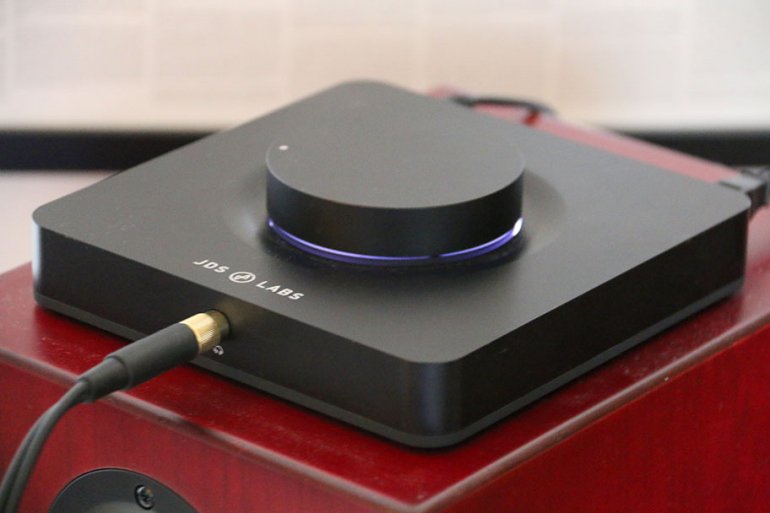
A much simpler (and cheaper) solution would be to get an AudioQuest Dragonfly Red. This is a very straightforward amp/DAC combo, in the form of a USB stick. It’s designed to be the absolute easiest way to boost your headphone power, and sharpen your sound quality. Obviously, it doesn’t have quite the same versatility, or inputs and outputs. But it’s significantly cheaper - $199 to The Element’s $349 - and may be the best solution for laptop users.
JDS Labs make several other amps, in addition to The Element. Most of these use the open-source Objective2 amp design, meaning they’re not all that different to a dozen similar companies. But several have what The Element uses as its DNA, most notably the EL Amp. It’s identical to The Element, but just happens to cost $100 less. Get it if you don’t want the DAC that comes with The Element.
Having said that, The Element remains a stellar amplifier. It’s designed well, it’s super simple to use, it slots into just about any situation, and it sounds terrific. While it won’t enthral those who get off on tube sound, it offers a fantastic solution for the rest of us, operating as a nearly flawless desktop amplifier that we were genuinely sad to send back. The big, powerful audio quality made using this amplifier a pleasure, and while we can’t say that we spent a great deal of time pouring over the testing data that JDS Labs uses, it was nice to know that it was there if we wanted it.